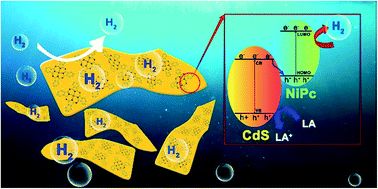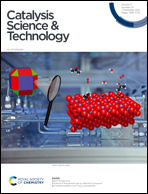Direct Z-scheme CdS–NiPc heterojunctions as noble metal-free photocatalysts for enhanced photocatalytic hydrogen evolution†
Abstract
The reasonable construction of Z-scheme heterojunctions is an effective pathway to enhance the photocatalytic performance. In this work, a direct Z-scheme cadmium sulfide–nickel phthalocyanine (CdS–NiPc) heterojunction was successfully constructed by a one-step solvothermal method, which exhibited highly efficient photocatalytic activity for hydrogen evolution and good cyclic stability under visible light irradiation. An optimal sample CdS–10%NiPc with 10 wt% NiPc was obtained, and the photocatalytic hydrogen production rate could reach 17.74 mmol h−1 g−1, which was 19.1 times higher than that of the pure CdS sample. The reasons for the improvement and the photocatalytic mechanism were studied in detail. The result indicated that the formation of a direct Z-scheme heterojunction made a close contact between CdS and NiPc, which effectively accelerated the separation and migration of charges. This study enriches the CdS-based composite photocatalysts for hydrogen evolution and provides a simple method for the construction of efficient Z-scheme inorganic–organic heterojunctions.



 Please wait while we load your content...
Please wait while we load your content...